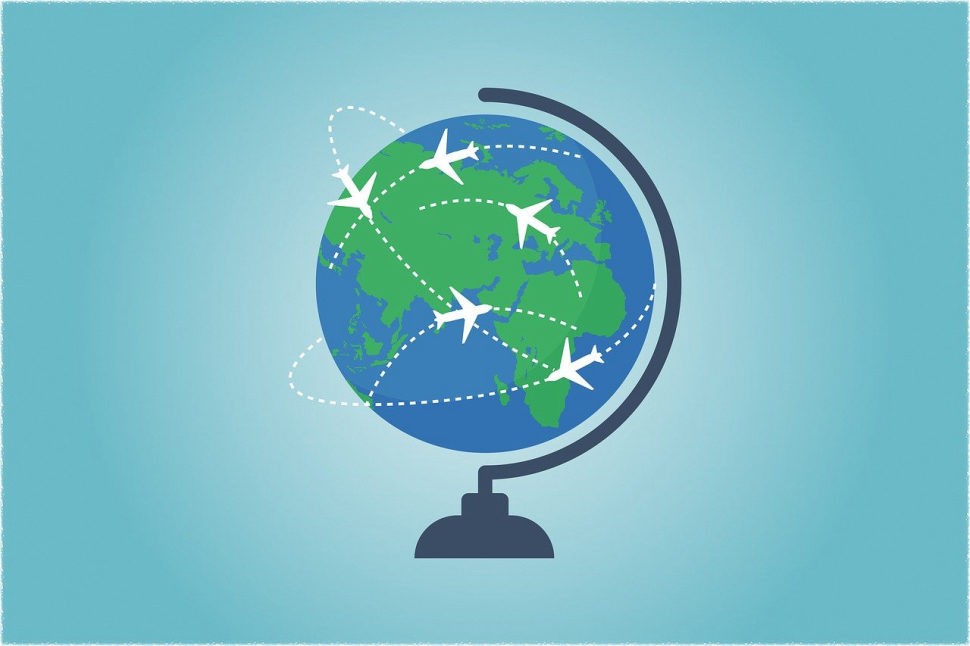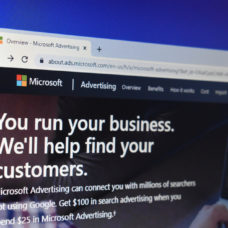Main International Marketing Takeaways:
- International marketing refers to any marketing activity that occurs across borders.
- Types of international marketing include export, licensing, franchising, joint venture, and foreign direct investment.
- Global marketing aims to satisfy the needs of global customers.
- International marketing enables the effective utilization of surplus production.
- International marketing can help create bigger and better opportunities for business expansion.
- Along with a broader customer base, global marketing also protects against potential economic downturns.
- Cultural restrictions between the home and host countries could hinder international marketing strategies.
- Other downsides of international marketing include high competition, government restrictions, and war situations.
International marketing is now a viable option for businesses, thanks to advancements in communication, transportation, and financial flow. According to the World Trade Organization, the volume of international merchandise trade increased 33 times between 1951 and 2010.
People are now accepting brands and products that originate from other countries. And this comes with a lot of opportunities and challenges.
What is International Marketing?
International marketing, also known as global marketing, involves marketing products to people across the world. In other words, it’s any marketing activity that occurs across borders. According to the American Marketing Association, international marketing is a multinational process of planning and executing the conception, pricing, promotion, and distribution of ideas, goods, and services to create an exchange that satisfies individual and organizational objectives.
It’s somewhat similar to export management. However, export management only involves managing the flow of goods and services from the host country to the guest country.
International marketing, on the other hand, covers production, finance, and personnel activities. It also entails several post-sales activities.
What are the Characteristics of International Marketing?
All the features of modern marketing apply to international marketing. However, the latter aims to satisfy the needs of global customers. So, it takes place across borders.
As a result, international marketing has specific characteristics, such as:
- It involves two or more countries
- Unique marketing strategies for specific countries
- It enables exchange between a company and foreign customers
- Decisions are taken with reference to the global business environment
As you may have guessed, global marketing offers attractive opportunities to companies that are successful at it. However, it also comes with several threats and challenges.
Before we consider the benefits and challenges of international marketing, let’s address an equally important question.
What are the Types of International Marketing?

International businesses looking to sell their products or service in a new country usually start with export or licensing. Besides these options, other international marketing types include contract manufacturing, joint venture, and foreign direct investment (FID).
Let’s delve a little deeper.
1. Export
Exporting refers to the practice of shipping goods directly to a foreign country. Manufacturers looking to expand their business to other countries often consider exporting first. And that’s not surprising.
Compared to the other international marketing types on this list, exporting entails the lowest risk. It also has the least impact on the company’s human resource management.
2. Licensing
Licensing is an agreement whereby a company, known as the licensor, grants a foreign firm the right to use its intellectual property. It’s usually for a specific period, and the licensor receives royalty in return.
You’ll find several examples of licensing of intellectual property across the United States. These include patents, copyrights, manufacturing processes, and trade names.
Some top global licensors include Disney, Iconix Brand Group, and Warner Bros, to name a few.
3. Franchising
Like licensing, franchising involves a parent company granting a foreign firm the right to do business in its name. However, franchises usually have to follow stricter guidelines in running the business than licensing.
This type of international marketing is also more prevalent among service firms, such as hotels, rental services, and restaurants. On the other hand, licensing is usually restricted to manufacturing.
4. Joint Venture
A joint venture describes the combined effort of two businesses from different countries to their mutual benefit. It’s the participation of two or more companies jointly in an enterprise in which each company:
- Contributes assets
- Owns the entity to some degree
- Shares risk
Perhaps the most popular international joint venture to date is Sony-Ericsson. It’s a partnership between a Japanese electronics company, Sony, and Swedish telecom company Ericsson.
5. Foreign Direct Investment (FID)
In FID, a company places a fixed asset in a foreign country to manufacture a product abroad.
Unlike joint ventures, the foreign company wholly owns the subsidiary. As a result, it establishes either effective control or substantial influence over the decision-making process.
Examples of foreign direct investment include mergers, acquisitions, retail, services, logistics, among others.
Several companies in the United States use these international marketing methods to sell their products and services globally. Here are some examples.
What is International Marketing examples?
There’s no one-size-fits-all approach to international marketing. As such, brands usually have to adopt various global marketing strategies to appeal to their diverse audience. It includes adjusting menus, translating across multiple languages, and adapting to the social system to avoid blunders. For example, Pepsi used the slogan “Come Alive with Pepsi” in Taiwan, or so they thought. Meanwhile, it actually translates as “Pepsi brings your ancestors back from the dead.”
This post will consider five brands that are enjoying success in global marketing — AirBnB, Nike, Coca-Cola, Apple, and Spotify.
1. Airbnb

In 2008, Brian Chesky and two other friends founded Airbnb, an online marketplace for vacation rentals in San Francisco. Since then, the company has grown to over 1,500,000 listings in more than 34,000 cities worldwide.
So, what’s responsible for the meteoric growth?
Airbnb created a dedicated localization department to make its site accessible around the globe. It also uses the power of local storytelling to foster trust and a sense of community between hosts and travelers.
For example, Airbnb launched a social media campaign with the hashtag #OneLessStranger in January 2015. It encouraged locals to perform random acts of hospitality for strangers and share on social media.
The campaign was a success!
Three weeks after #OneLessStranger launched, over three million people worldwide were either creating content or talking about the campaign.
2. Nike

Nike has managed to increase its global presence over the years through international sponsorships. An example of such is its previous long-standing arrangement with the English soccer club, Manchester United.
Besides international sponsorships, Nike have several other strategies to make its products appealing to the global market.
For instance, the NikeID co-creation platform puts the power of design in the consumer’s hands. It’s a quick way for the brand to deliver products that address cultural differences and styles.
3. Coca-Cola

Coca-Cola is one of the biggest brands in the world and for good reasons. It’s an excellent example of a brand with a brilliant international marketing strategy.
The company gave local operations slack to adjust the soda’s taste to fit the market’s cultural preferences. Besides, advertising, promotion, distribution, and pricing are also adapted to suit specific demands.
Coca-Cola focuses on universal values, such as sharing and happiness. However, the brand also localizes campaigns using cultural references and endorsement deals with local celebrities.
4. Apple

Apple‘s primary global marketing strategy is to maintain a consistent brand across cultures.
The company’s products, ads, and websites use the same clean, minimalist design in different parts of the world. Also, the visuals on the website are the same, regardless of the country or language.
In other words, the iPhone makers focus on providing a consistent brand and customer experience.
Note that the one-size-fits-all approach may not work for most brands. However, it seems to work for Apple. In fact, Interbrand chose the iPhone maker as one of the best global brands in 2019.
5. Spotify

Swedish-based audio streaming and media service provider Spotify launched twelve years ago.
Today, Spotify has a total of 299 million users and 17 offices around the world. What’s more, the company made Interbrand‘s list of the best global companies in 2019.
So, how did Spotify quickly expand from Sweden to the rest of the world? The answer lies in how it describes its content.
Rather than music genre, the streaming service gets users to focus on a habit or lifestyle that people share worldwide. For example, you could select a Workout, Sleepy, or Study music preferences.
As a result, international artists whose content falls in a specific category can quickly gain listeners from other countries.
What are the Benefits of International Marketing?
International marketing can help create bigger and better opportunities for business expansion. Not only does it offer a broader customer base, but it’s can also protect against a potential economic downturn. Global marketing also enables the effective utilization of surplus production and helps build relationships with other businesses worldwide. Besides, it also provides employment opportunities for the host country.
Here are some benefits of international marketing.
1. Market Expansion
One primary advantage of international marketing is market expansion. It’s an opportunity to extend a brand’s customer base.
Two decades ago, the idea of marketing a product or service was too expensive for small businesses to consider. But that’s no longer the case, thanks to new communication channels such as Google and Facebook.
Now, small businesses can access a more extensive customer base overseas without breaking their budget. Not only does it increase profit, but international marketing also boosts brand awareness.
2. Protects Against Economic Downturn
Unexpected economic events and catastrophes can wreak havoc on a company’s fortune.
However, revenue from selling to an overseas audience can offset possible downturns. As a result, your business will be able to weather the tough times and make up for losses suffered at home.
With only $45.5 million at the U.S. box office, The Great Wall failed to earn even one-third of its $150 million budget. However, the action movie was a mega-hit in China, where it earned $170 million.
It earned a total of $289.4 million at the international box office.
3. Effective Utilization of Surplus Production
International marketing helps manufacturers to utilize excess production effectively.
It involves shipping goods produced in surplus in one country to another. That way, foreign exchange of products between the importing and exporting countries can meet each specific needs.
In other words, surplus raw materials, goods, or services in domestic production can be shipped to foreign markets.
4. Provides Competitive Advantages
Besides increasing revenue and diversifying asset, international marketing also provides competitive advantages.
By expanding abroad, you can access new customers and visibility that your competitors might not have. This is especially true when the home market is already saturated.
Global marketing allows you to remain ahead of the competition.
5. Employment opportunities
Global marketing increases employment opportunities in a foreign country.
International marketing provides access to specialized talent that may not be available in a brand’s home country. These include marketing managers, marketing coordinators, and translators, among others.
As a result, companies usually hire workers with a unique skill set that may prove useful at home.
For instance, over 71 percent of advertisers believe that some of the best ad campaigns are being developed abroad. So, applying a similar strategy at home could convey a competitive advantage.
What are the Disadvantages of International Marketing?
Despite its benefits, global marketing comes with specific downsides. For one, cultural restrictions between the home and host country could hinder the marketing strategy. Other disadvantages of international marketing include government restrictions, high competition, potential infrastructure issues, and war in the host country.
1. Cultural Differences
The varying culture and norms across the globe could lead to various marketing challenges. These include differences in consumer needs and usage patterns as well as response to marketing mix elements.
Also, foreign countries sometimes have institutions that may call for creating an entirely new marketing strategy.
For example, Muslim culture considers dogs to be dirty creatures. That means a message that describes a dog as “man’s best friend” won’t work in Middle Eastern countries.
2. Government Restrictions
International marketing entail following various strict rules and regulations that the host country’s government imposes. These usually include high taxes, as well as duties to import and export goods.
In the end, these restrictions can impact a company’s profitability and continuity. Sometimes, companies may find it challenging to follow these foreign regulations and be forced to leave.
3. War Situations
Tensions and war-like situations among nations can severely impact international marketing.
As a result, the ability to sell products and services in other countries is subject to diplomatic relations. Trade will proceed smoothly as long as these countries remain friendly.
However, any tension in the host country could lead to huge losses. In some cases, it could lead to a complete shutdown of operations.
4. High Competition
Brands that are entering a foreign market usually have to compete with both local companies and international brands. As a result, the degree of competition in global marketing is generally high.
Final Word: How do you do International Marketing?
Admittedly, it can be challenging for small or medium-sized businesses to build a successful international marketing strategy. That’s because they usually lack the expertise or budget to launch such a campaign.
However, smaller companies can partner with other businesses in the local market to build cultural research. Another option is to hire marketing experts with knowledge of foreign markets.
Whichever option you may choose, the most crucial facet for a successful global marketing campaign is research. Not only will it inform decisions, but it’ll allow companies to maximize potentials in new markets.
Finally, it’s essential to make regular tweaks to remain competitive in the foreign market. For instance, you could review your marketing strategy every quarter.



















It was helpful thank you 😊
8
Yes it’s very helpful
well structured thanks
This was very helpful to enhance my understanding
This article is use full for my examinations. Thank you
well structured and easy to understand, Thanks
Thanks
well structured and easy to understand.
It was helpful thanks
HOW TO RECOVER YOUR CRYPTO / BITCOIN FROM SCAMMERS.
I want to share to the whole world how GEO COORDINATES HACKER helped me recover my stolen money. I thought I was going to lose everything I had invested into this crypto platform that turned out to be a scam, I was devastated when I lost all my funds to a scammer. When it comes to recovering lost cryptocurrency, GEO COORDINATES HACKER is the greatest. They have the most skilled bitcoin recovery specialists to handle your request and address any issues you may be having with bitcoin recovery. You can rely on GEO COORDINATES HACKER to do all in its power to help you recover your stolen money. If you need any help contact them by using Via
Email; geovcoordinateshacker@proton.me
Email; geovcoordinateshacker@gmail.com Telegram ( @Geocoordinateshacker )Website; https://geovcoordinateshac.wixsite.com/geo-coordinates-hack